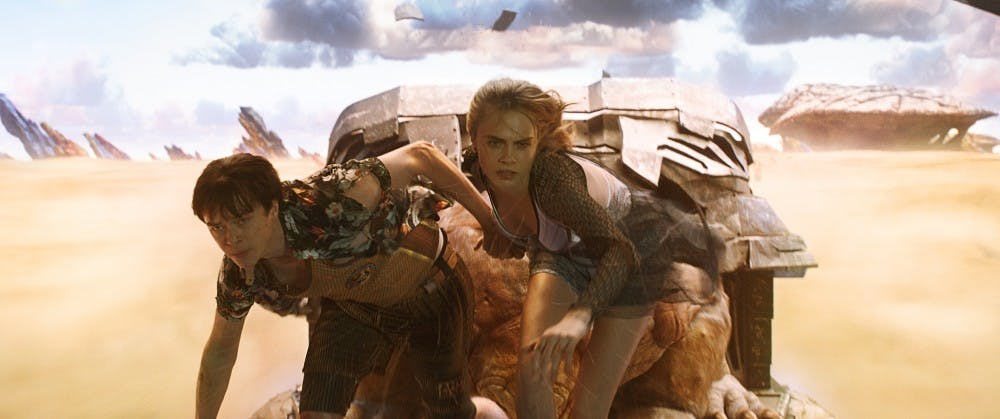If you’re going to see Luc Besson’s latest sci-fi flick, make sure you’re in it for the visuals. For all its CGI-ed splendor and action sequences, the movie itself feels curiously empty.
Let’s start with the good. “Valerian and the City of a Thousand Planets” had one major task to accomplish. In order to secure its place in movie history, it had to deliver on the colorful, trippy alien exotica represented in the comic books Besson loved. It does this in spades.
Between eye-popping computer generated images, sequences and extremely creative space-age technology, there’s a lot to look at in this movie. Early coverage of the movie was absolutely correct in stating that there would have been no way to make the film 10 years ago. But as a tour de force, “Valerian” leaves much to be desired.
One thing is certain, Luc Besson should not write his own scripts. The dialogue between Valerian and Laureline ranges from flat to downright cringe-worthy. Dane Dehaan is one of the most talented actors of his generation, but he couldn’t possibly elevate this material. It’s telling that the most enjoyable parts of the movie occur when aliens are speaking in their own native tongues or not speaking at all.
Besson’s characterization is also woefully inconsistent. He can’t seem to decide which of his characters is the heart of the team and which is the head.
Part of this problem may be based in Besson’s source material. The “Valerian and Laureline” comics, written in the 1960s and onward, featured a classic, retro pairing — the square-jawed man of action and his smiling, sexy female counterpart. The 2017 iterations of the characters fall into more modern roles, but have a distinctly trope-y feel to them. This Valerian is a wise-cracking womanizer who spends the entire movie trying to convince Laureline, his more committed, stereotypically temperamental counterpart, that he’s ready for a serious romantic relationship. It’s a boring but acceptable central relationship.
However, midway through the movie, Besson appears to forget which version of Valerian and Laureline he’s working with. Valerian is simultaneously a maverick and a soldier committed to maintaining the universe’s status quo. Laureline goes from kickass, brilliant warrior girl to confused damsel in distress and back so fast it’ll make your head spin. And from scene to scene, the two swap roles in the eternal battle between pathos and logos. Every emotional milestone feels both shocking and completely unimportant, because there’s usually nothing to indicate that it was coming up in the first place.
Perhaps Besson hoped to hide his inconsistent characterization in the maze of tangentially-related plot points. The overarching storyline in the movie is actually fairly simple and reasonably interesting. But the titular characters have to stumble their way to the movie’s climax almost by accident after rescuing each other from a series of expensive-looking but bland alien critters. While Valerian and Laureline play around with the computer-generated residents of Alpha, other people move the plot forward.
Ultimately, the story is where Besson fails. The cardinal rule of sci-fi and fantasy writing is that something about the plot must be more interesting than the setting. Sure, spaceships, phasers, lightsabers and aliens in prosthetics are fun to look at, but we return to the worlds of “Star Wars,” “Harry Potter” and “The Lord of the Rings” because we care about the Jedi, wizards and hobbits within them, not because it’s neat to watch a million lightsaber, wand and sword fights in a row.
Besson got so caught up in his own set dressing that he forgot to give this movie a heart.






